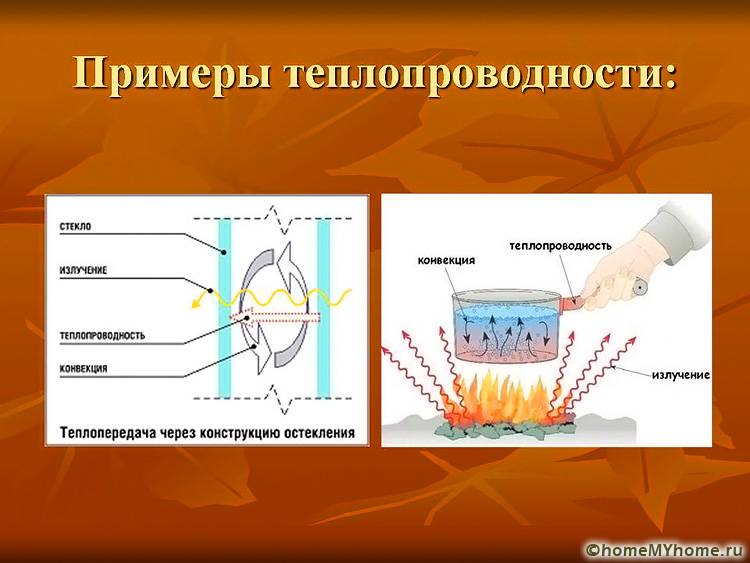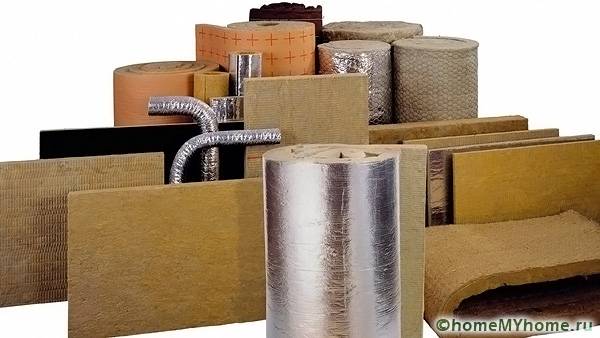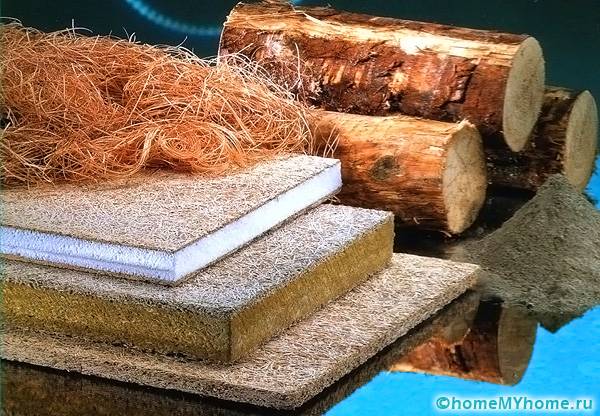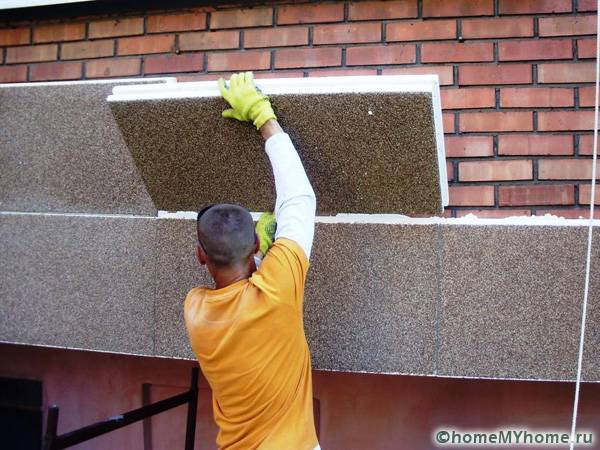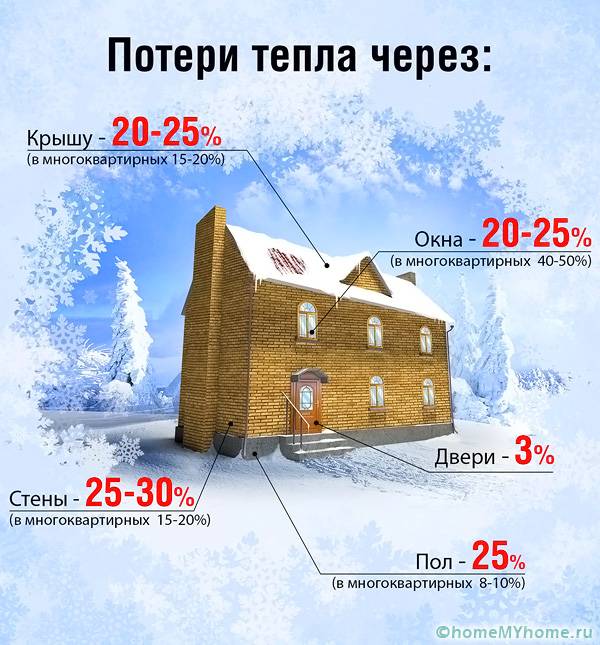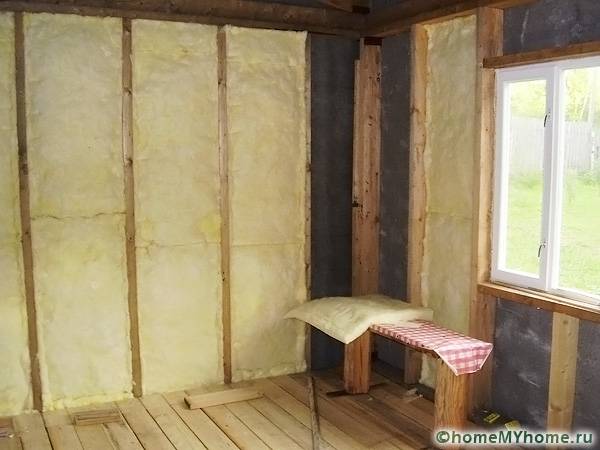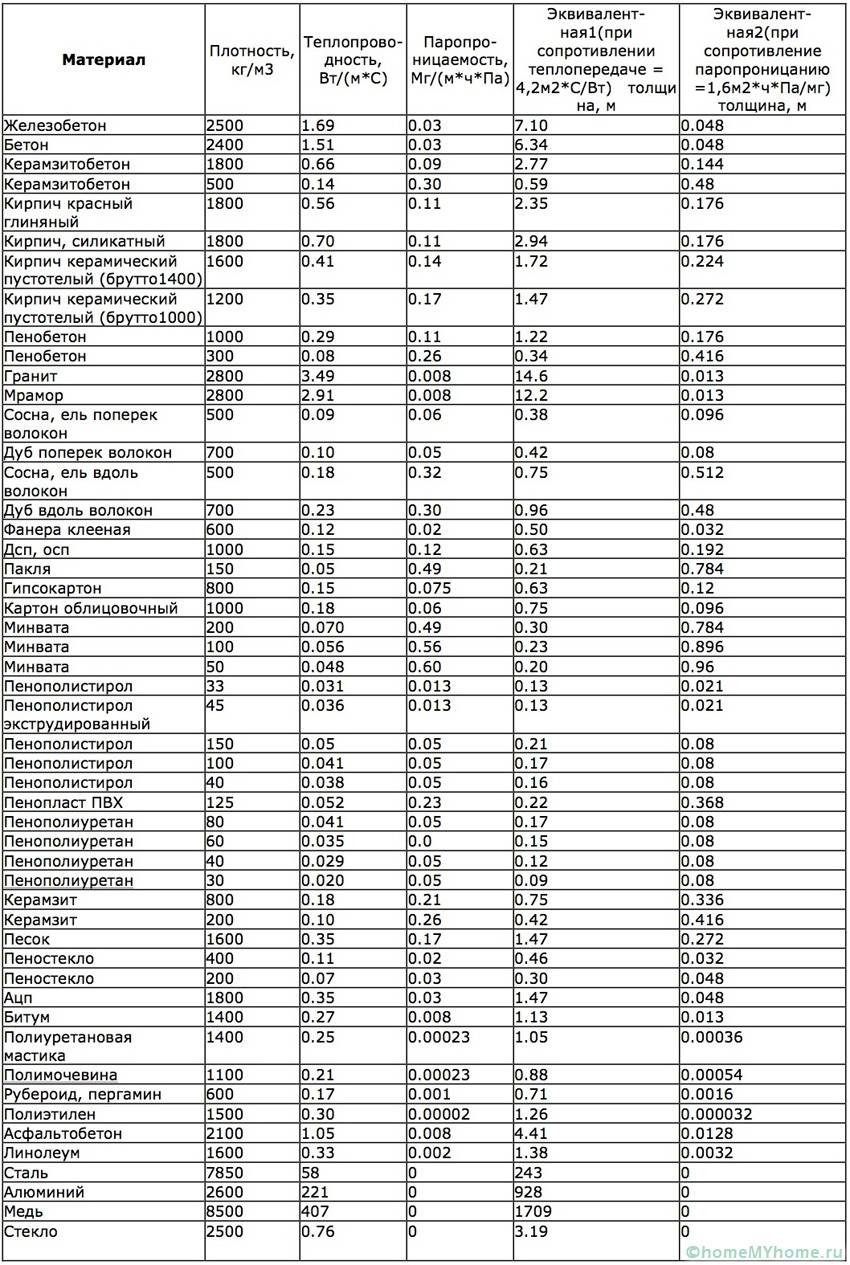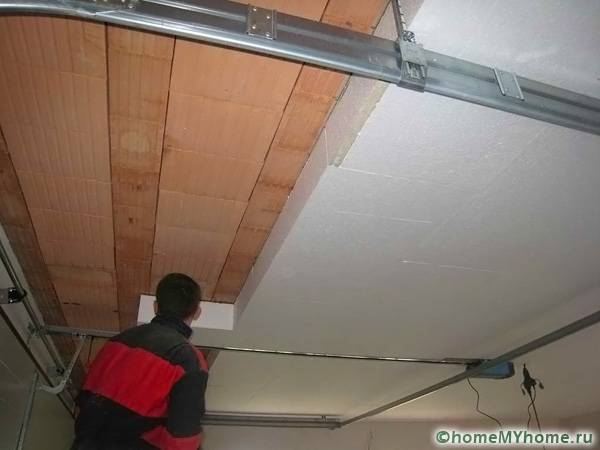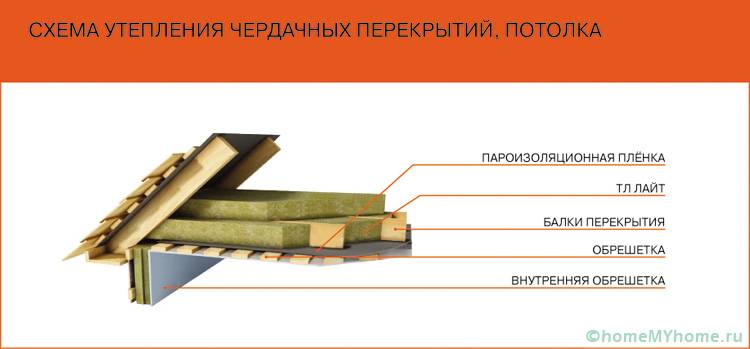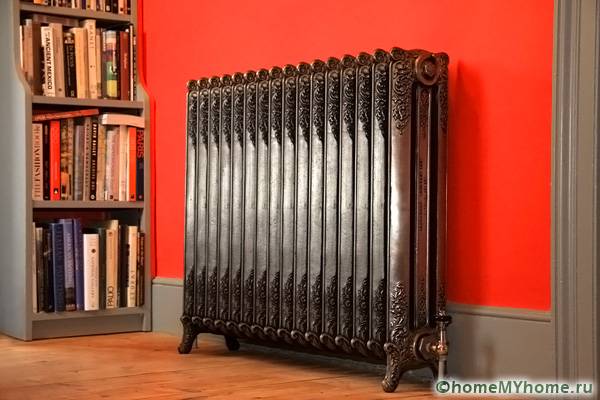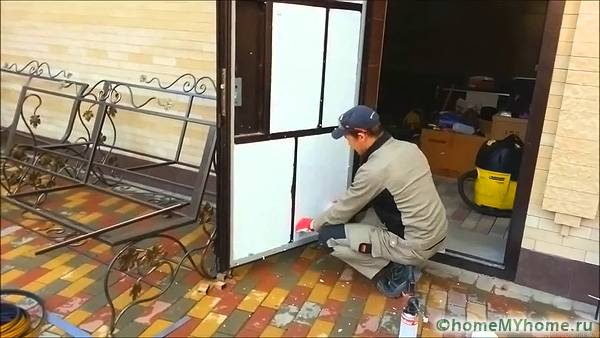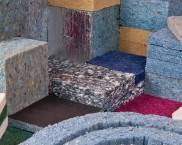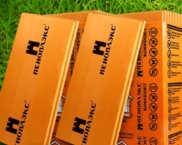Thermal conductivity of building materials: table of coefficients
Any construction work begins with the creation of a project. At the same time, it is planned both the location of the rooms in the building, and the main heat engineering indicators are calculated. It depends on these values how warm, durable and economical the future building will be. It will allow you to determine the thermal conductivity of building materials - a table that displays the main coefficients. Correct calculations are a guarantee of successful construction and the creation of a favorable indoor climate.

For a house to be warm without insulation, a certain wall thickness is required, which differs depending on the type of material
The content of the article
Thermal conductivity: concept and theory
Thermal conductivity is the process of transferring thermal energy from heated parts to cold ones. Exchange processes occur until the temperature value is completely equilibrium.
The heat transfer process is characterized by a period of time during which the temperature values equalize. The more time passes, the lower the thermal conductivity of building materials, the properties of which are displayed in the table. To determine this indicator, such a concept as the coefficient of thermal conductivity is used. It determines how much heat energy passes through a unit area of a given surface. The higher this indicator, the faster the building will cool down. The thermal conductivity table is needed when designing the protection of a building against heat loss. This can reduce the operating budget.
Useful advice! When building houses, it is worth using raw materials with minimal heat conductivity.
What determines the value of thermal conductivity?
The value of the thermal conductivity of building materials depends on many factors.The table of coefficients presented in our review clearly shows this.
This indicator is influenced by the following parameters:
- higher density promotes strong interaction of particles with each other. In this case, the temperature equilibration is performed more quickly. The denser the material, the better the heat is transmitted;
- the porosity of the raw material indicates its heterogeneity. When heat energy is transferred through such a structure, the cooling will be small. There is only air inside the granules, which has a minimum amount of coefficient. If the pores are small, then heat transfer is difficult. But the value of thermal conductivity increases;
- with high humidity and wetting of the walls of the building, the heat transmission rate will be higher.
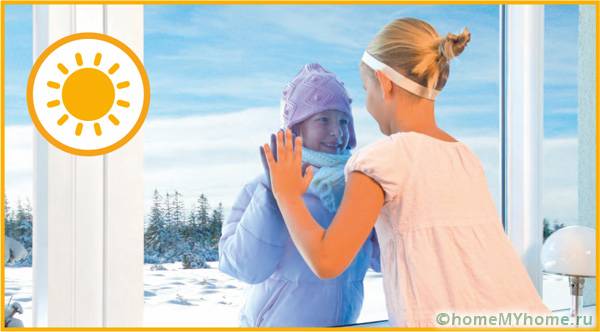
The lower the thermal conductivity of building raw materials, the more comfortable and warm in the room.
Use of thermal conductivity values in practice
The materials used in construction can be structural and heat-insulating.
The greatest value of thermal conductivity is in structural materials that are used in the construction of floors, walls and ceilings. If you do not use raw materials with heat-insulating properties, then installation of a thick layer will be required to preserve heat insulation for the construction of walls.
Therefore, when building a building, it is worth using additional materials. In this case, the thermal conductivity of building materials is important, the table shows all values.
Helpful information! For buildings made of wood and foam concrete, it is not necessary to use additional insulation. Even using low-conductivity material, the thickness of the structure should not be less than 50 cm.
Features of thermal conductivity of the finished structure
When planning a project for a future house, it is imperative to take into account the possible loss of thermal energy. Most of the heat escapes through doors, windows, walls, roof and floors.
If you do not carry out calculations for the heat saving at home, then the room will be cool. Recommended buildings from bricks, concrete and stone additionally insulate.
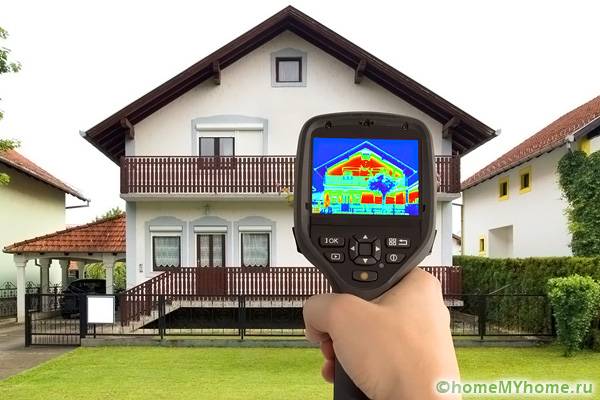
Insulation of buildings made of concrete or stone increases the comfort conditions inside the building
Useful advice! Before insulating a home, you need to think about high-quality waterproofing. At the same time, even high humidity will not affect the characteristics of thermal insulation in the room.
Varieties of insulation of structures
A warm building will be obtained with an optimal combination of a structure made of durable materials and a high-quality heat-insulating layer. Such structures include the following:
- when erecting frame constructionThe wood used provides the rigidity of the building. Insulation laid between the posts. In some cases, insulation is used outside the building;
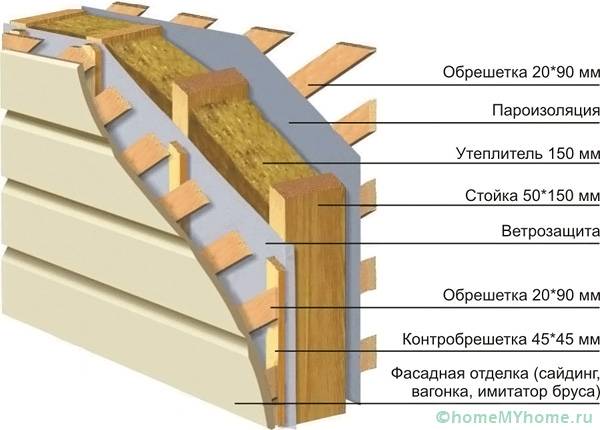
Installation work on the insulation of the frame structure requires the use of additional structural elements
- a building made of standard materials: cinder blocks or bricks. In this case, insulation is often carried out on the outside.
How to determine the thermal conductivity of building materials: table
Helps to determine the coefficient of thermal conductivity of building materials - table. It contains all the meanings of the most common materials. Using such data, you can calculate the thickness of the walls and the insulation used. Thermal conductivity value table:
To determine the value of thermal conductivity, special GOSTs are used. The value of this indicator differs depending on the type of concrete. If the material has an index of 1.75, then the porous composition has a value of 1.4. If the solution is made using crushed stone, then its value is 1.3.
Helpful hints
Ceiling losses are significant for those living on the top floors. Weak areas include the space between floors and the wall. Such areas are considered cold bridges. If there is a technical floor above the apartment, then the loss of heat energy is less.
Ceiling insulation on the top floor is done outside. Also, the ceiling can be insulated inside the apartment. For this, expanded polystyrene or thermal insulation boards are used.
Before insulating any surfaces, it is worth knowing the thermal conductivity of building materials, the SNiP table will help with this. Insulating flooring is not as difficult as other surfaces. Materials such as expanded clay, glass wool or expanded polystyrene are used as insulating materials.
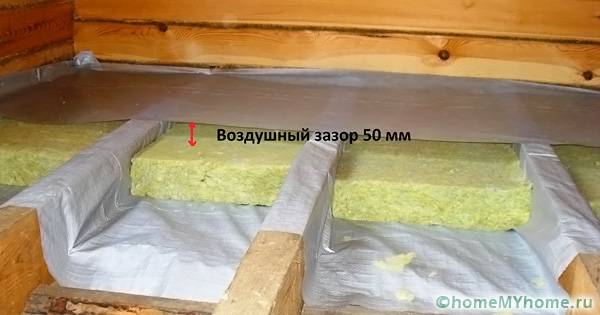
Creating a warm floor requires special knowledge. It is important to consider the height and thickness of materials
To insulate an apartment on the top floors with high quality, you can fully use the capabilities of central heating. In this case, it is important to increase the transfer of heat from the radiators. To do this, you should use the following tips:
- if some part of the batteries is cold, then it is required to deflate. This opens a special valve;
- so that the heat penetrates inside the house and does not heat the walls, it is recommended to install a protective screen with a foil coating;
- for free circulation of heated air, do not clutter up the radiators with furniture or curtains;
- if you remove the decorative screen, the heat transfer will increase by 25%.
Heat loss through entrance doors can be up to 10%. In this case, a significant amount of heat is spent on air masses that come from outside. To eliminate drafts, it is necessary to reinstall worn-out seals and gaps that may appear between the wall and the box. In this case, the door leaf can be upholstered, and the gaps can be filled with polyurethane foam.
Windows are one of the main sources of heat loss. If the frames are old, then drafts appear. About 35% of thermal energy is lost through window openings. For high-quality insulation, double-glazed windows are used. Other methods include insulating cracks with polyurethane foam, pasting joints with a frame with a special seal and applying silicone sealant. Correct and comprehensive insulation is a guarantee of a comfortable and warm home, in which mold, drafts and cold floors will not appear.





